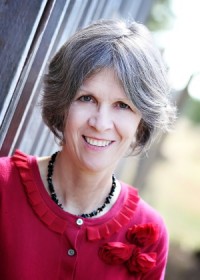Snapshots of Dementia: Four Things I Learned in My Crash Course
Yours truly with our oldest daughter, one day post-crash Crash. That’s what happened to me in mid-May last year. No, it wasn’t a car accident. We were visiting our local daughter and her family, who all had brand-new bikes. Our then three-year-old grandson was out riding his bike along with his 15-year-old foster brother (if you missed H’s story, find it here). “Mom, you can take my bike if you want and ride with them,” my daughter offered. Never mind that I hadn’t been on a bike for years. I used to ride a unicycle, so a bike should be no problem, right? Never mind that I need to stay well for my husband’s sake. Bike riding helps keep people healthy, right? Never mind any of the second thoughts I’ve had since that eventful day. I dutifully donned my daughter’s helmet (for which I am still thanking God) and rode down their long driveway behind the boys. I won’t bore you with all of the details, but after a few successful rides up, back, and around the drive and cul-de-sac, I hit some gravel. The bike flew one way, and I flew the other: down. Cut to the emergency room, one stitch in my left eyelid, bandages over deep wounds in my elbow, bruises and swelling on my face, and a broken left humerus (upper arm bone). My daughter, who went with me, brought me home around midnight. Under the influence of pain meds, I lost consciousness at home early the next morning, hitting my forehead on a door and wedging myself inside the bathroom in the process. My new motto: Go big or go—back to the ER. Another visit there for my daughter and me, but thankfully no concussion or other major injuries (the giant hematoma waited a few days to pop up on my forehead). This began a long saga of doctor’s visits, physical therapy, and ultimately a reverse shoulder replacement and more physical therapy. Almost a year later, my arm/shoulder still isn’t 100 percent, but it’s much better. Tom didn’t crash. He didn’t even—thankfully—see the crash take place. But through this time, I learned a few lessons to add to my care partner knowledge, and I want to share them now. 1) “Big feelings” happen. This is true not just with our four-year-old grandson but for those living with dementia too. As soon as the ambulance left, Tom paced around our daughter’s backyard for an hour or so, crying. Seeing me leave in the ambulance upset him for days. His brain can’t process change well, and his amygdala, the part of the brain that handles emotions, was working overtime. Anyone would feel upset if their...
Read More






